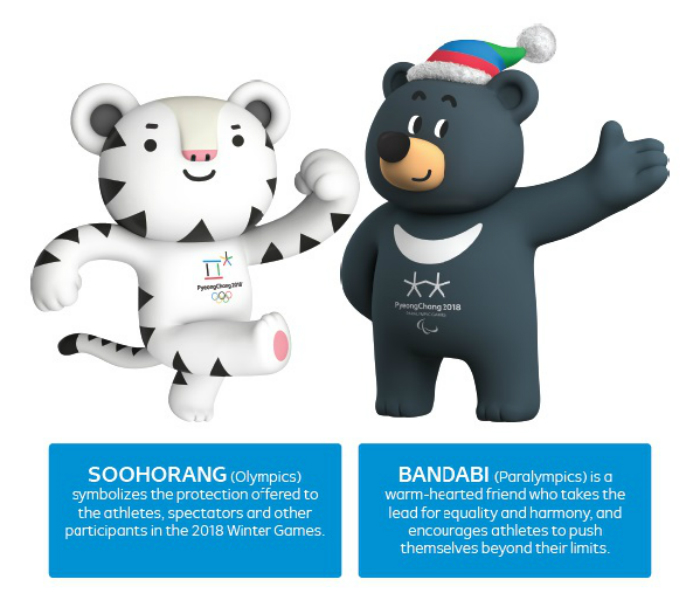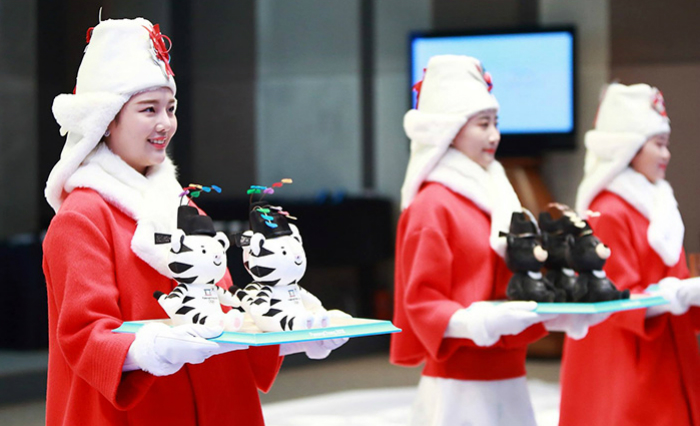View this article in another language
- 한국어
- English
- 日本語
- 中文
- العربية
- Español
- Français
- Deutsch
- Pусский
- Tiếng Việt
- Indonesian

By Hur SomEe and Kim Young Shin
The two official mascots of the PyeongChang 2018 Olympic and Paralympic Winter Games are Soohorang the white tiger and Bandabi the Asiatic black bear.
The name Soohorang is a portmanteau of sooho and rang. Sooho, meaning "protection" in Korean, symbolizes the protection offered to the athletes, spectators and other participants in the Winter Games. Rang comes from the middle syllable of the Korean word for tiger, ho-rang-ee. It's also the last syllable in the name of a famous folk song from the nearby town of Jeongseon, the song "Arirang."
Soohorang, the mascot for the Olympic Winter Games, has white fur embellished with black triangular patterns and the PyeongChang Olympics emblem on its chest.
The white tiger is the successor of Hodori, the orange tiger mascot of the Seoul 1988 Summer Olympics. Tigers are traditionally familiar animals on the Korean Peninsula. Folklore has it that white tigers, in particular, appear as guardians that looked after the people in the village.
Following the Olympic Winter Games from Feb. 9 to 25 will be the Paralympic Winter Games from March 9 to 18. The Paralympic mascot is Bandabi the Asiatic black bear. That species of bear is also a symbol for the province of Gangwon-do.
Bandabi has dark gray fur and a white half-moon marking on its chest.
Its name is a compound of the word banda, from the bear's name in Korean, and bi ("bee"), which stands for the celebration of the Games.
The bear appears in the foundational myth of the Korean people, and is another animal very familiar to folklore and stories across the Korean Peninsula. Korea's foundational myth says that a bear locked itself in a cave for 100 days, living only on garlic and mugwort. It endured this because it wanted to become human. To many people, bears are seen as warm-hearted, trustworthy and have strong willpower, which resembles the spirit of the Paralympic Games.

Olympic mascots wearing traditional Joseon hats will be presented to the champions at the Olympic and Paralympic Games. (PyeongChang Organizing Committee)
Soohorang and Bandabi will accompany the champions at the Olympic and Paralympic Games.
As well as their winning medals, champions here will also be presented with mascots wearing traditional Joseon hats. The hats are decorated with traditional eosahwa paper flowers. These were presented to the top scorers on state examinations by Joseon monarchs.
sehp91@korea.kr